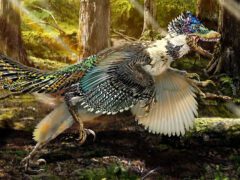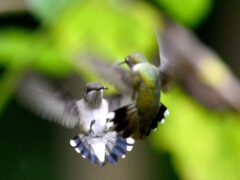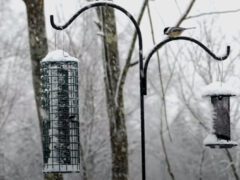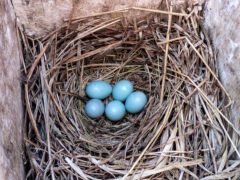Bell’s Sparrows are small songbirds—medium-sized for sparrows—with relatively long tails. The head is rounded and the bill is fairly short and thick.
Relative Size
About the size of a Chipping Sparrow; slightly smaller than a Golden-crowned Sparrow.

 sparrow-sized or smaller
sparrow-sized or smallerMeasurements- Both Sexes
- Length: 4.7-5.9 in (12-15 cm)
- Weight: 0.5-0.8 oz (15-22 g)
- Length: 4.7-5.9 in (12-15 cm)
- Weight: 0.5-0.8 oz (15-22 g)

















































